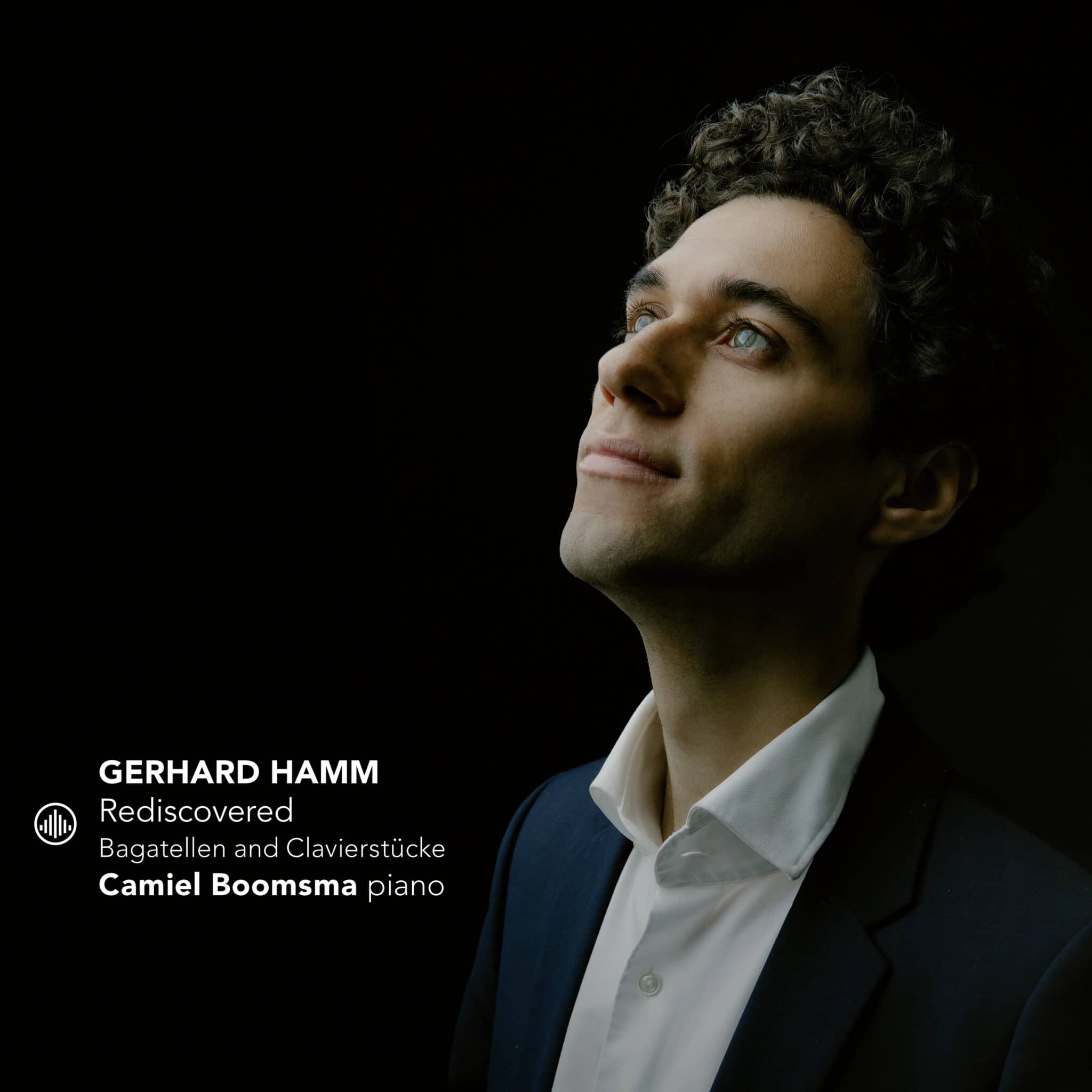Der 1835 in Trier geborene und 1904 in Venlo verstorbene niederländische Komponist Gerhard Hamm lernte zunächst Violine und Orgel. Eine seiner ersten Positionen war die des Organisten und Musikschullehrers im Luxemburger Wallfahrtsort Echternach. Im niederländischen Venlo wurde er 1860 Leiter der Philharmonischen Gesellschaft, 1861 der Liedertafel Orpheus und 1871 des von ihm gegründeten Gemischten Chores. Außerdem war er Lehrer an der Pädagogischen Hochschule in Venlo und korrespondierendes Mitglied der Nederlandsche Toonkunstenaars-Vereniging.
Gerhard Hamm komponierte etwa 500 Werke für alle Arten von Instrumenten, Stimmen und Ensembles, aber nur wenige Kompositionen wurden veröffentlicht.
Auch sein Sohn Karel Hamm (1875-1937) wirkte als Komponist und hinterließ ein umfangreiches Oeuvre.
Camiel Boomsma hat die Musik der beiden Komponisten im Textheft treffend beschrieben: « Die Entdeckung der Musik des holländischen Komponisten Gerhard (und seines Sohnes Karel) Hamm war wirklich ein Spiel des Schicksals. Nach einem Konzert gab mir Carl Hamm, der ein direkter Nachfahre ist, einen Stapel Partituren. Als ich die Stücke zu Hause durchspielte, war ich von ihrer Zartheit und erzählerischen Kraft beeindruckt. (…) Gerhard Hamm gehört in gewisser Weise zur musikalischen Familie von Robert Schumann. Er schreibt kleine poetische Reflexionen über die großen Gesten der Romantik. In diesen kleinen musikalischen Gedichten liegt eine ganze Welt verborgen. »
Die Poesie dieser fünf Kompositionen, deren einzelne Nummern Boomsma ineinander verwoben hat, kommt in den Interpretationen des niederländischen Pianisten wunderbar zum Ausdruck. Dennoch versündigt er sich nicht mit reiner Träumerei, sondern reichert sein Spiel mit dynamischen und farblichen Nuancen an, so dass sein Vortrag bei aller Poesie auch sehr lebendig ist und durchgehend attraktiv. Eine schöne, empfehlenswerte Klavierplatte!
The Dutch composer Gerhard Hamm, born in Trier in 1835 and deceased in Venlo in 1904, first learned the violin and organ. One of his first positions was that of organist and music school teacher in the Luxembourg pilgrimage town of Echternach. In Venlo, the Netherlands, he became director of the Philharmonic Society in 1860, of the Liedertafel Orpheus in 1861, and of the Mixed Choir he founded in 1871. He was also a teacher at the Pedagogical College in Venlo and a corresponding member of the Nederlandsche Toonkunstenaars-Vereniging.
Gerhard Hamm composed about 500 works for all kinds of instruments, voices and ensembles, but only a few compositions were published.
His son Karel Hamm (1875-1937) also worked as a composer and left an extensive oeuvre.
Camiel Boomsma aptly described the music of the two composers in the textbook: « Discovering the music of the Dutch composers Gerhard Hamm and his son Karel was really a chance encounter. After one of my recitals, Carl Hamm, a direct descendant of these composers, handed me a stack of scores. While playing through the pieces at home, I was struck by their delicacy and narrative power. (…) Gerhard Hamm belongs in a way to the musical heritage of Robert Schumann. He writes small-scale poetic reflections on grand Romantic gesturesA whole world lies hidden in these concise musical poems. »
The poetry of these five compositions, whose individual numbers Boomsma has interwoven, is wonderfully expressed in the Dutch pianist’s interpretations. Nevertheless, he does not sin with pure reverie but enriches his playing with dynamic and colorful nuances, so that his performance, for all its poetry, is also very lively and attractive throughout. A beautiful, recommendable piano disc.




















